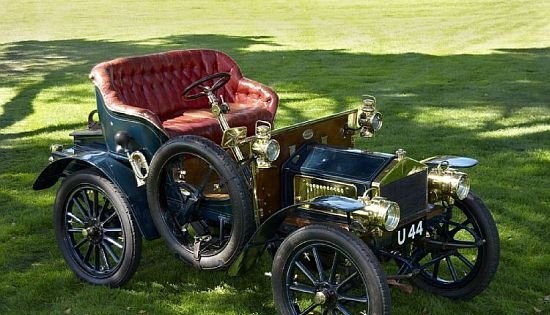BIM is young, will it grow?
[Posted in LinkedIn on February 24, 2015]
The image above is of a Rolls Royce 10hp. According to Bornrich.com the car was built in 1904 and is priced at $7.25 million. The first edition of the car had a 10-HP 1.8-litre engine, with a 3-speed gearbox, along with twin cam operating overhead inlet valve, which were landmarks of that age. It is almost unrecognisable from current cars apart from a wheel at each corner. At the time it was build the car industry was very young. The first car was built in 1886, a Benz Patent-Motorwagen, a few years before the above Rolls Royce. Four years after the Rolls Royce, Henry Ford started production of his Model T, generally regarded as the first affordable car. In 1926 two car pioneers joined forces to become Daimler-Benz. It was still a while before the horse was replaced by the car. The last recorded horse omnibus in London was a Tilling bus which last ran, between Peckham and Honor Oak Tavern, on 4 August 1914. In Berlin it was 25 August 1923.
What is this to do with BIM?
Well, there are a number of correlations that can be drawn. Perhaps horse drawn could equate to drawing boards, Rotring pens, razor blades as correction devices. The pre 1900 cars to CAD. The Rolls could represent the early days of BIM, where it was a rarefied thing, with very little take up. As with the Rolls, the early adopters have a very significant and influential position in the development, growth and longevity. Then we get to today, where access and take up is improving and the Model T is launched. If we are only at the Model T we are still at the very early days of BIM and there is still a huge and exciting journey to get to the car of today which is almost everywhere. Apparently there are now more cars in the world than there are people. Who would have thought that in 1904. The car has had a profound effect on the world as we know it. Has BIM the potential, if nurtured correctly, to have and equally profound effect? Well, no, is the blunt answer. Continuing with the car analogy, and jumping forward to the merger which formed Daimler-Benz. Could this be when sometime in the future BIM and GIS merge to like the best of both? Volvo and others have already developed self driving cars and are exploring test platforms. The development of the car continues as will the growth and spread of BIM. But it will not stop at BIM.
Introducing DIMEC
BIM is transient, it will not stay for long, and will be seen as the fad that it is, just bolstered by all that government hype. Perhaps the Red Flag Laws regarding horseless carriages. Not quite, but transient, yes. It will evolve into something much bigger, just as the car did, and continues to do. BIM will grow and join with other Digital initiatives and developments. Together, Digital Information Management, Exchange, and Collaboration.
DIMEC is in part represented by this simple high level mind map. I have already shared this with University College London and am happy to share it again. The element that is not represented strongly enough is the people element. The collaboration between all of the parties.
Just imagine a world without the internet. That is not a long trip back in time. Now go forward in time and start linking all of the above digital sources. That would be very Big Brother and have significant security issues. Take that leap forward in a internet type way and think about the benefits. Not only lots of data, but the beginnings of an integrated society, where decisions can be open and made based on holistic and current information. Add to that the collaboration mentioned above and DIMEC becomes society changing in a proportion and impact similar to that of the car. Some of that digital information could also be used to help inform the self driving cars of the future, in real time.
It has taken over one hundred years for the car to develop. DIMEC will not take that long as the rate of change and rate of data manufacture and collection is accelerating exponentially. The people change will be be the defining or limiting factor of the actual rate of benefit realisation.
Perhaps, twenty years, instead of one hundred. Perhaps the future is connected, joined up, and together.


















